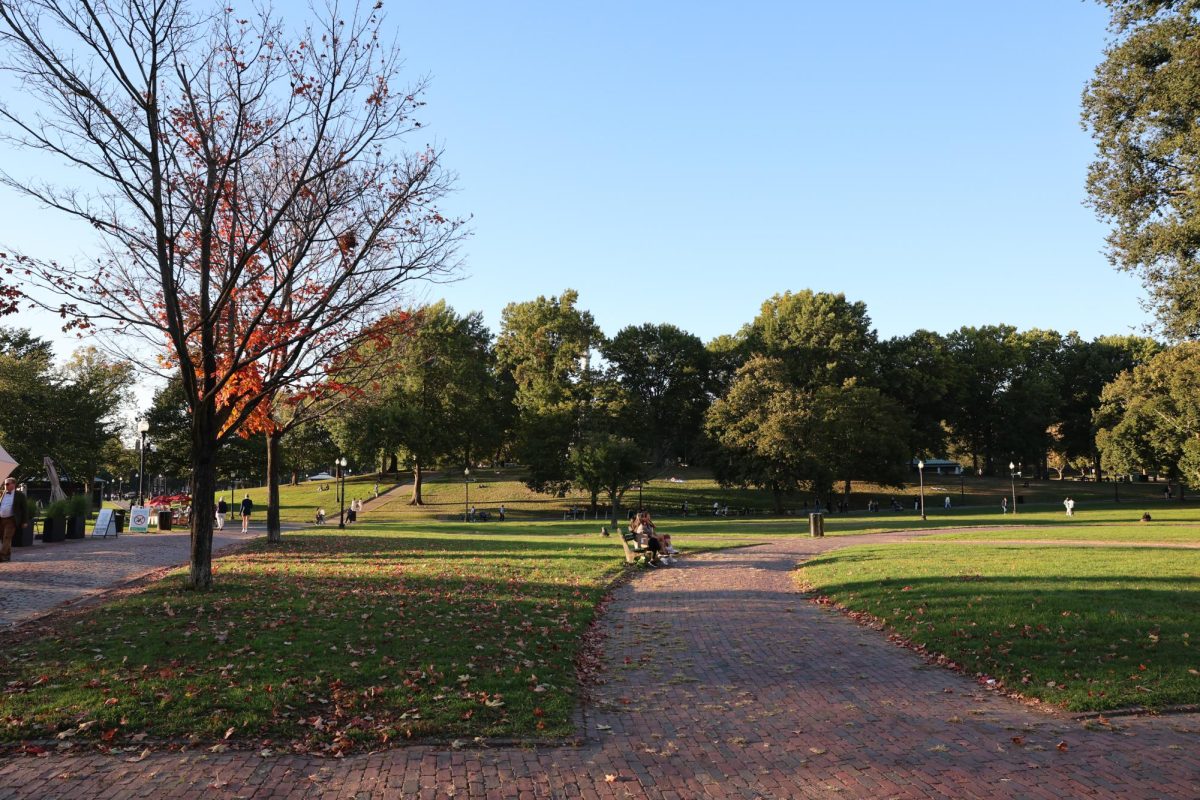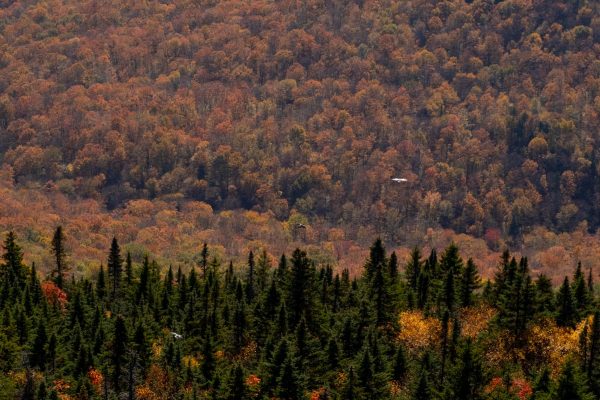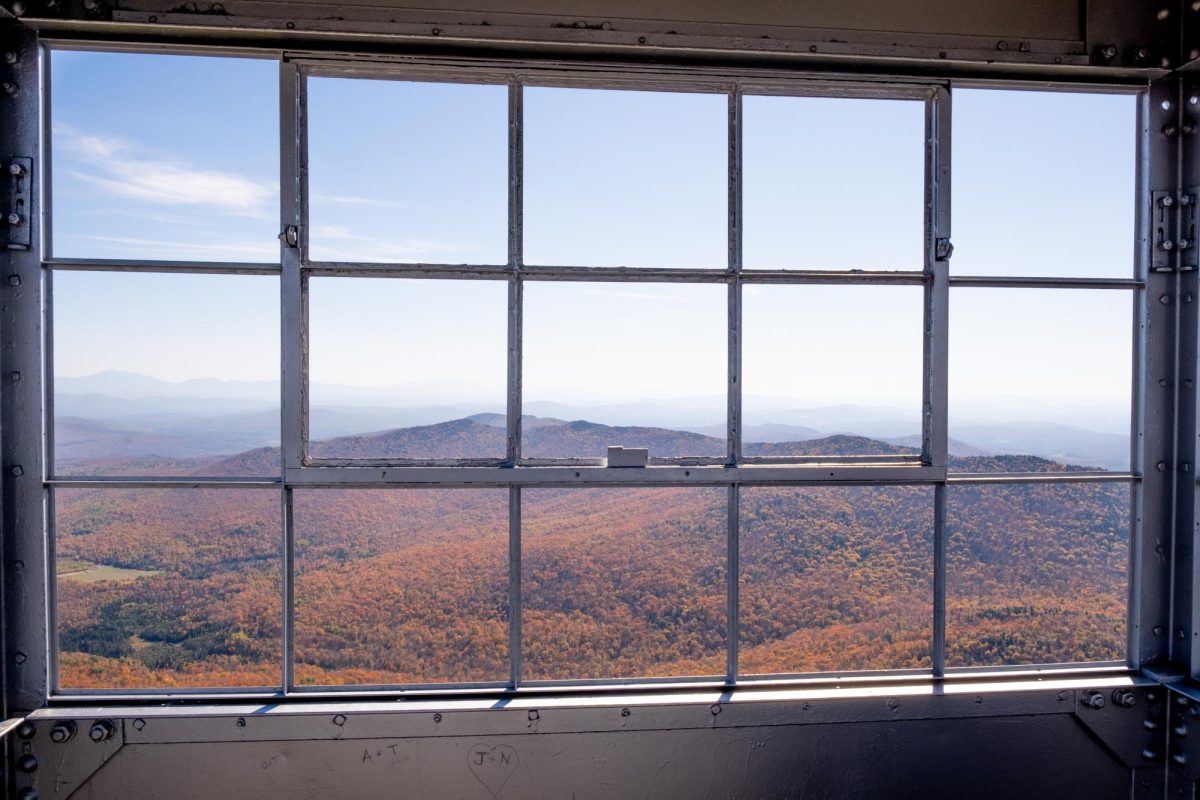
Fall in New England is filled with tradition, from apple orchards and pumpkin patches, to hikes through air that grows cooler by the day. It’s also characterized as a season full of color. Leaves turning deep reds, golden yellows, and bright oranges stirs a sense of nostalgia and warmth.
The region’s autumn wouldn’t be complete without its crown jewel: fall foliage. Millions travel to the region’s hills and small towns to witness the landscape shift as summer gives way to autumn.
But this year, the show is arriving early and ending sooner than usual. After a dry summer with erratic rainfall, scientists say 2025’s foliage season will be less predictable, more patchy, and shorter lived than usual.
“Just walking around in the woods near my house, just outside of Boston, I’m really struck by the amount of brown, sort of crispy, crunchy leaves that I’m seeing,” says Wyatt Oswald, professor of environmental science at Emerson College.

There is a complex biological process behind the turning of the leaves. As days grow shorter in late summer, the decreasing sunlight signals trees to begin preparing for winter. When photosynthesis is no longer useful, the green pigment chlorophyll breaks down. As it fades, other pigments emerge, revealing yellow, orange, and red colors.
However, sunlight exposure isn’t the only factor affecting fall foliage. Environmental conditions such as temperature, rainfall, and length of day also determine the seasonal landscape, according to expert and photographer Jim Salge. Salge works at New Hampshire-based travel and culture publication Yankee Magazine, where he relies on weather forecasts and phenological data to create a fall foliage forecast.
“We look for warm, sunny days and crisp, cool nights in order to kickstart the foliage most years,” Salge said in an interview with The Beacon.
This year’s weather threw the usual formula off balance.
After a dry, hot summer which reached record highs, much of northern New England’s forests have experienced drought stress. When trees dry out quickly and are exposed to intense summer sunlight, it can lead to bright red foliage. Yet, droughts tend to make leaves more brittle and quick to fall.

“Those leaves are not going to turn spectacular colors this year because they’ve already shut down, but not in the gradual sort of spectacular way that we are accustomed to,” Oswald said.
Both Salge and Oswald expect the make-up of New England forests to change as a result of weather shifts and invasive species. One notable example this year is the rapid spread of beech leaf disease. The disease is caused by a microscopic roundworm that feeds inside the leaf buds of beech trees.
The American Beech stands as one of New England’s most iconic trees, joining Yellow Birch and Sugar Maple to form the “northern hardwoods” that define the region’s mountainous landscapes.
“[Beech leaf disease] is actually causing our beech trees to brown and turn early. But it’s also killing the trees,” Salge said. He expects the northern forests could lose about 50% of their beech trees in the next ten years.
At the same time, local weather patterns are beginning to shift.
“Overnight low temperatures in summer and fall are not cooling off as much due to climate change and greenhouse gases,” Salge said. While extreme weather events like droughts may become more frequent, long-term climate projections for the Northeast suggest the region will grow gradually wetter rather than drier. Over time, Oswald and Salge anticipate that these changes will affect the timing and geography of the fall display.
“These species … are basically shifting northward out of the region and into southern Canada,” said Oswald. “There is a regionally important maple syrup industry that may be detrimentally affected by the loss of the species over time from New England.”
Although forests are changing, the beauty of fall foliage will endure, even if its timing and intensity become less predictable. The shifting landscape, however, will bring economic challenges to the region.

Fall foliage isn’t just scenery—it’s big business. In fact, the millions of visitors who flock to New York, Vermont, Massachusetts, New Hampshire, and Maine each year to hike, drive, and wander beneath the changing canopy bring an estimated $8 billion to local economies, according to the U.S. Forest Service.
“The whole point of fall foliage is to go to the small towns, to have those classic New England adventures, to visit apple orchards and a pumpkin patch and go for a hike,” said Salge. “These are things that small towns offer, and it brings in huge, huge money into places that otherwise aren’t on the map.”
But beyond the economic toll, a decline in the annual pilgrimage to chase peak foliage—to pack the car, head north, and watch the hills ignite in red and gold—would mean losing an essential part of the Northeast’s cultural identity. For now, the leaves are still turning.